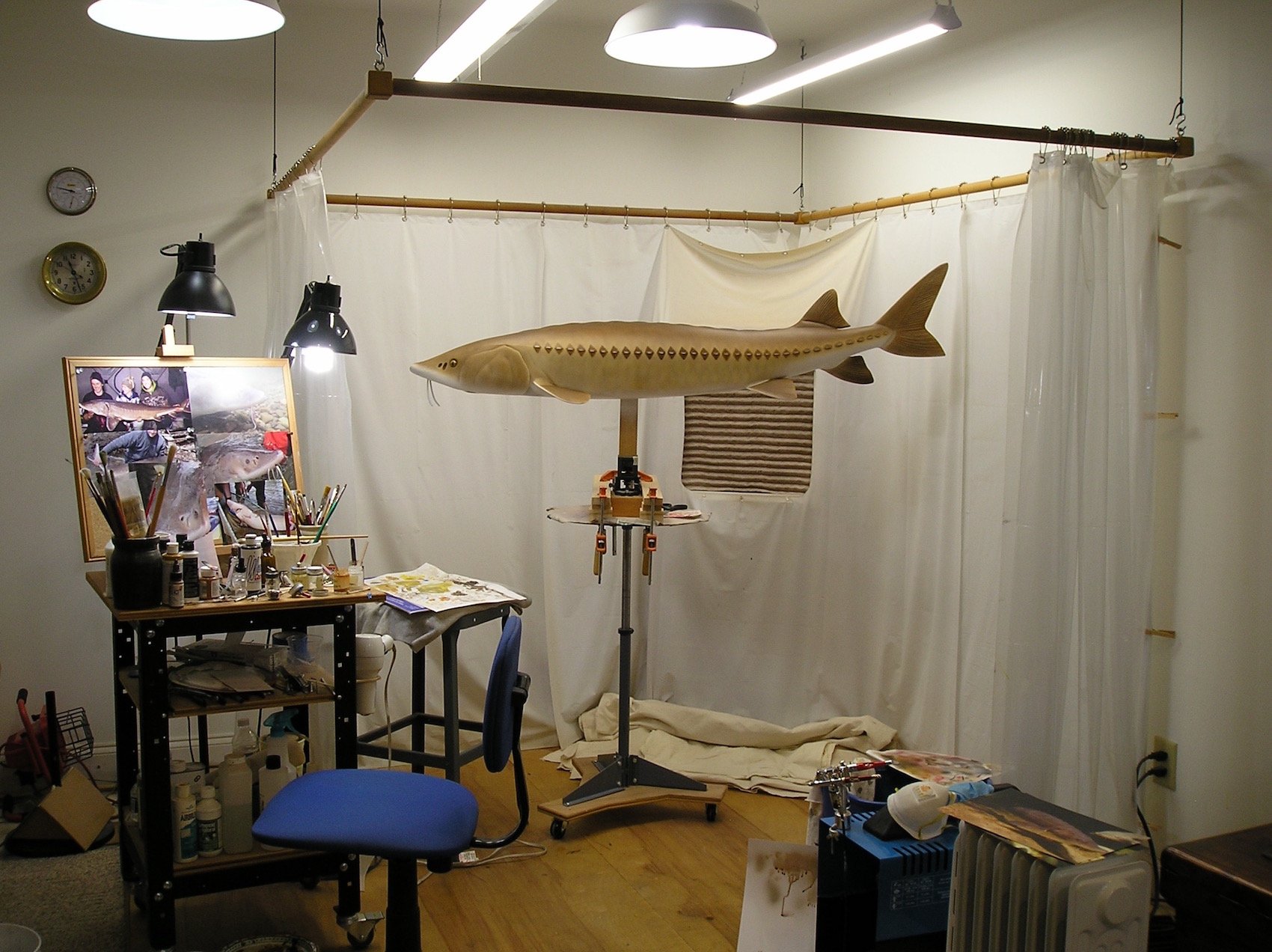Creating a Great Lakes Gentle Giant - A 60” Lake Sturgeon
With the exception of a few marine species, all my fish carvings have been salmonids. The Lake Sturgeon, often referred to as “living dinosaurs”, was commissioned by a customer whom resides on the shore of Lake Ontario. It was a joy to learn about these ancient gentle giants that once inhabited the great lakes by the millions, and the challenge to carve such a large and distinctive species from what I usually carve.
The sturgeon’s planned display was an English style half body wall mounted without a plaque. At five feet long, the original basswood plank weighed 35 pounds and required no small effort to saw out the body’s top and side profiles. While at times three or four feet away from the blade, it was both a physical and visual challenge to support and guide the plank’s leveraged weight while maintaining a smooth even cut along the lines. Happily, I prevailed with nice clean lines. The carving’s finished weight including fins was still a hefty 13.6 lbs.
At 60”, it’s my largest carving to date. Since the client wanted it to look "oldish", the project provided a more open interpretation. I painted acrylics with a mix hand and airbrush. The goal was to paint a color scheme that represented the leathery skin and colors I was seeing in my reference images and an impression of the past.
Hanging the pattern on the shop wall to get a sense of the planned carving’s scale and proportions.
The enormous pectoral, dorsal and ventral fins are fully shaped with their accurate penciled rays yet to be carved. Sturgeon as far as I could tell from research have 2 - 3 times the fin ray counts of modern fish like salmonids and bass. The head is in early rough-out and shaping.
The body is 90 something percent shaped, and test fitting the pectoral fin.
The shark like tail fin has been epoxied in place with preliminary shaping. Notice the penciled lines along the flank and back for the planned scutes.
The body is complete, sealed with two coats of sanding sealer and ready to be sprayed with gesso. The scutes along the back and side are inlaid (difficult to see the back’s in this photo), the eye is sculpted with sculpting epoxy, and the barbels are made from solid brass rod. While I could have easily carved the barbels, the brass rods will survive accidental knocks from handling, which with a carving 5 feet long is very easy to do!
The finished paint scheme, and context to the carving’s size.
The last images provide different perspectives on shape and color. Sturgeon being ancient, lack later evolutionary scales but instead have skin covering a skeletal structure that’s often described as bony plates. The skin, according to a fisheries biologist friend in California "feels like leather" (they caught a 13' White Sturgeon in a lower Sacramento River study). Sturgeon are also very angular, meaning their body shape's cross-section are an elongated pentagon (each point of the pentagon has a row of scutes). When they're young their shape can be quite extreme with the line between scutes almost straight. As they age and grow, their bottom remains flat while the upper sides and back develop shallow curves (the belly scutes disappear with size). And like fellow ancient shark species, they have a heterocercal caudal fin.









